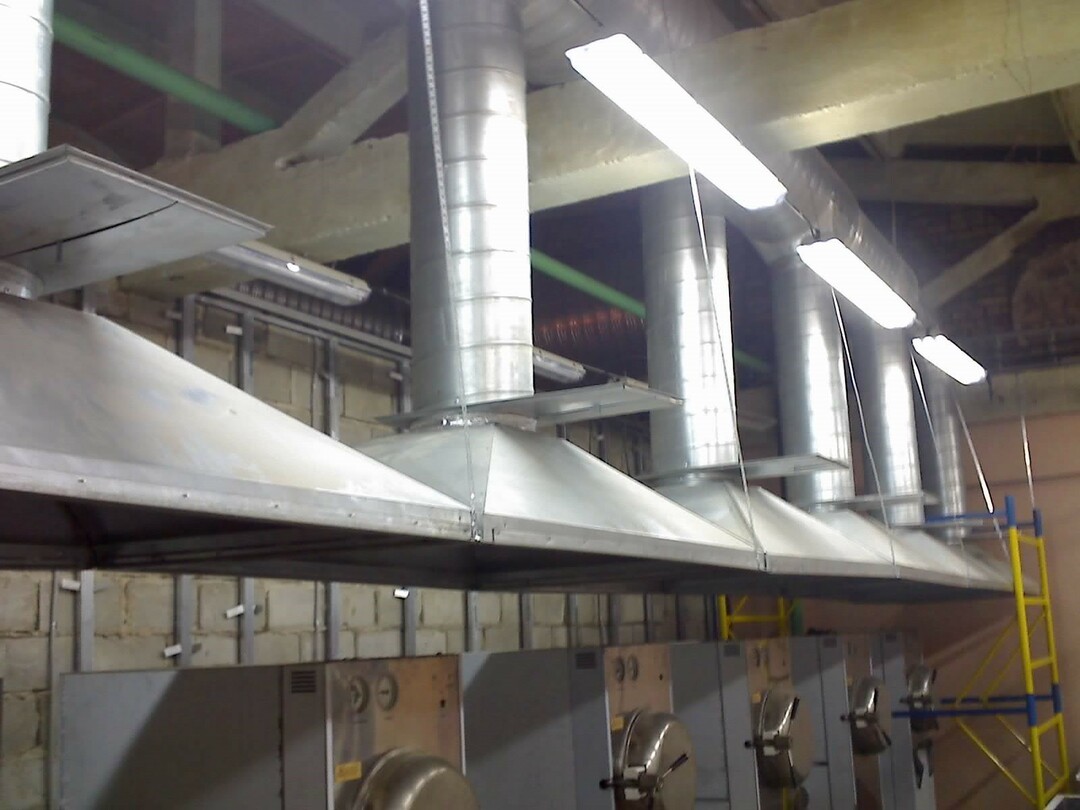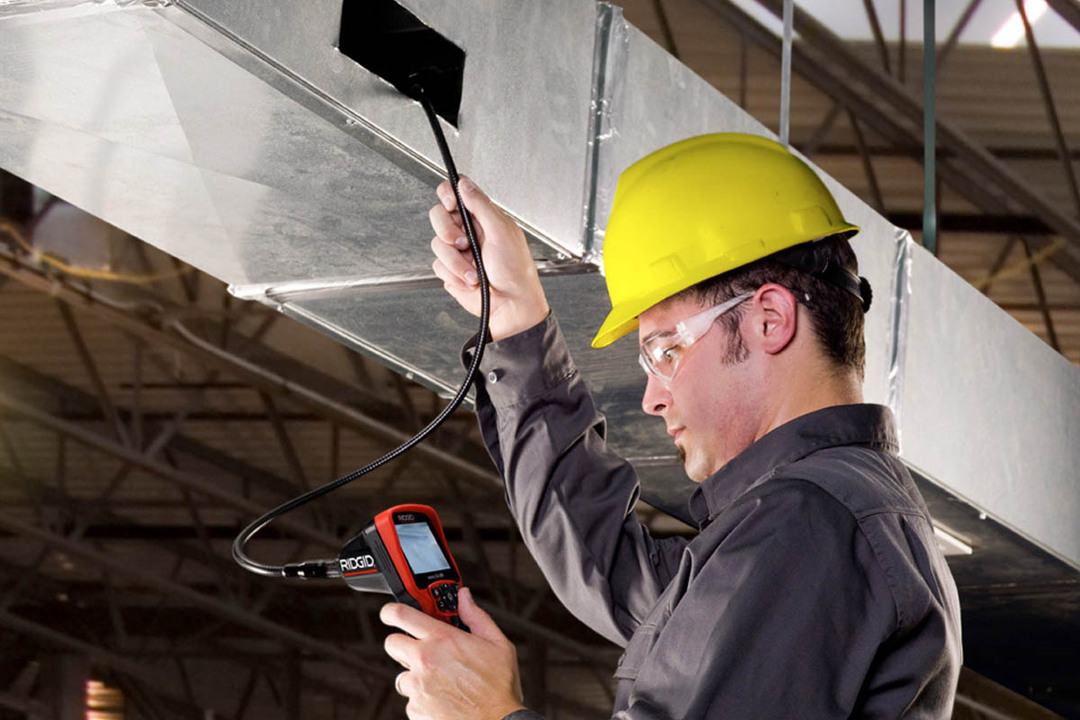Every parent, regardless of the level of wealth and employment, can provide a healthy environment for their child. After all, not only the quality of food, clothes, toys affects the development of a little person, is not it?
First of all, it is the optimal temperature and humidity in the premises for children, because this is a great way to avoid diseases and buy medicines.
In this material, we will tell you what the temperature and humidity regime should be in the premises for children, and also give advice on how to normalize it.
The content of the article:
-
Sanitary standards and requirements for premises
- Temperature and humidity in kindergarten
- Temperature and humidity at school
- Temperature and humidity conditions at home
- Premises for newborns
- Instruments for measuring temperature and humidity
- Ways to normalize temperature and humidity
- Conclusions and useful video on the topic
Sanitary standards and requirements for premises
After numerous studies, checks and confirmation of the test results that the group conducted of narrow-profile specialists (doctors, teachers, epidemiologists, scientists), the optimal temperature and humidity.
And the state has enshrined the obligation to comply with them in kindergartens and schools at the legislative level - SanPiN.
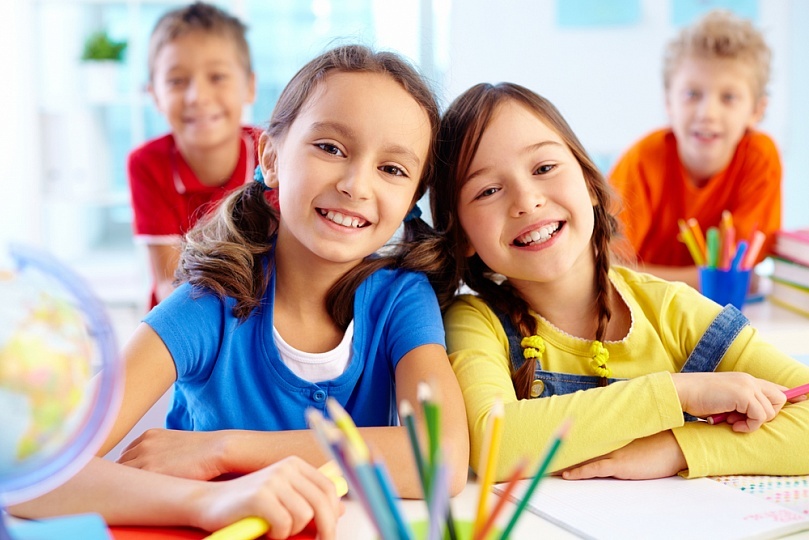
By maintaining the balance of food, physical and mental stress, as well as maintaining an optimal indoor climate, you can achieve incredible results. The child becomes active, grows well, develops
In addition, maintaining the recommended regime indoors helps to strengthen the immune system, children are much less likely to get sick. And in case of illness, the immune system copes with viruses without any problems - diseases are less complicated.
Temperature and humidity in kindergarten
In the first years of their lives, it is important for children that the standards are observed in the premises of the kindergarten. SanPiNa by humidity and temperature. This is especially true when the seasons change, when heating and air conditioning systems are actively used.
Since children are engaged in a variety of activities throughout the day, each room has its own temperature regime.

The child spends in kindergarten from 8 to 10 hours a day for 5-6 days a week. He eats, sleeps, plays, studies there. Therefore, it is so important that the microclimate in the premises of the garden corresponds to the age characteristics of the body of preschoolers.
In accordance with SanPiNom the air temperature in the garden should be:
- 22-24 ° С - nursery groups;
- 21-23 ° С - junior and senior groups;
- 19-20 ° С - bedrooms;
- 22-24 ° С - toilet in a manger;
- 19-20 ° С - toilets of older groups;
- 22-24 ° С - medical cabinet;
- 19-20 ° С - halls for active classes;
- more than 12 ° С - walking veranda;
- from 29 ° С - pool;
- 25-26 ° С - changing rooms and showers;
- from 15 ° С - heated interbody transitions.
This temperature difference is explained by the fact that for each type of activity of children in the institution, a specially designed room / hall is equipped for this. The child sleeps in the bedroom and under the covers - he should not be cold / hot.
Physical education classes are held in the gym, where the temperature is slightly lower than in the playroom, since the classes are active and children should not sweat in the process. The temperature in the game is slightly higher than in the gym. there are also quiet activities and games.
For all premises of the nursery, the standards provide for a temperature higher than for older children.

To ensure the required level in the gardens, regular through and corner ventilation must be carried out for 10 minutes and at least once every 1.5 hours.
These recommendations are regulated by the gardeners depending on the weather conditions. Children should not be in a room that is ventilated.
Humidity in kindergarten should be in the 40-60% range. This value is regulated by ventilation:
- a short-term decrease in room temperature by 2-4 ° C is considered normal;
- cannot be ventilated through the toilet;
- bedrooms are ventilated until naps;
- in winter, the vents are tightly closed half an hour before the children wake up.
Failure to comply with these standards can adversely affect the well-being and activity of children. As a rule, frequent colds in a group can be caused by neglect of prescriptions. SanPiNa preschool workers.
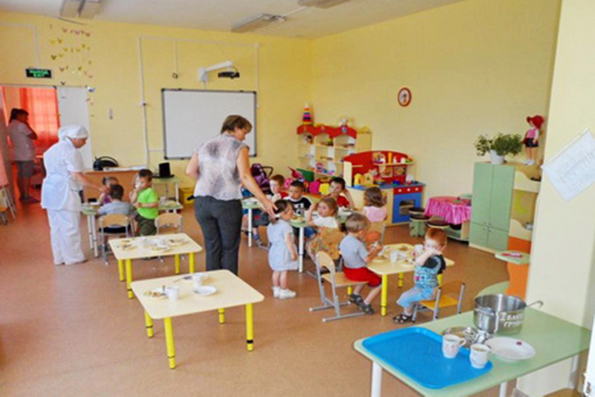
The inflow of fresh air in the kindergarten groups contributes to the saturation of cells and cerebral cortex with oxygen and, as a result, improves the general condition of the child's body. Children are cheerful, play actively, attentive in the classroom
Violation of the temperature regime and not maintaining the necessary humidity provokes the appearance of such diseases in preschoolers:
- ARVI;
- growth of adenoids;
- persistent allergies and asthma;
- dermatitis.
If children in the group are often sick or there are reasonable suspicions of non-compliance with the standards, the parents can initiate an inspection of the garden, as well as contact the district education department or even the prosecutor's office.
Temperature and humidity at school
Requirements SanPiN 2.4.2.2821-10 no less strict with regard to the organization of an optimal microclimate for students by a school institution.
And while they are not geared towards ranking temperature and humidity readings by age / grade, they do take into account the following factors:
- The upper and lower temperature thresholds for classrooms and auditoriums are 18-24 ° C.
- The temperature regime in the halls intended for conducting classes related to vigorous physical activity is 17-20 ° С.
- The minimum temperature in the pool and showers is from 25 ° C.
In a school institution, it is especially important to adhere to performance standards SNIP by the balance of heat and humidity. Indeed, within the framework of one building, a large number of children gather every day, who actively consume oxygen, so there is no way to do without regular ventilation.
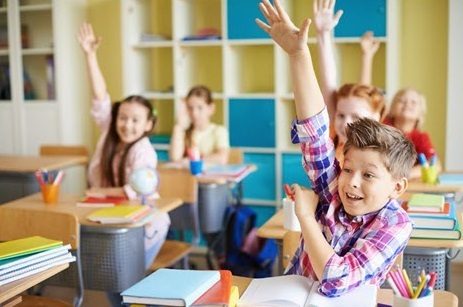
Children spend some of their time in one position, which slows down blood flow and metabolism. To keep them from freezing, it is important that the school is not cold. And since children are simply not adapted to move slowly, it should not be hot in the rooms.
Maintaining the optimal temperature throughout the day of classes creates favorable conditions for the educational activities of children. They are not hot in physical education class and are not cold for 45 minutes of the lesson in a seated position. Such temperatures can be safely called comfortable for a child.
Normatively, optimum humidity the air in school is the same as in kindergarten.
To maintain it in the required parameters, regular airings are carried out:
- all classrooms - before and after training sessions;
- classrooms - during breaks;
- school corridors - while schoolchildren are in class.
The duration of each ventilation is regulated depending on the season and the air temperature outside. Short-term temperature drop should not exceed 2-4 ° С.
Sometimes in classrooms the windows are closed during the lesson and a large number of children - 12-30 schoolchildren find themselves in a closed air space. This is fraught with disability for them, decreased mental activity.

Despite the fact that the educational load for children is calculated taking into account the age characteristics of their body and psyche, it is not easy for them to cope with classes. It is especially difficult to concentrate on the lesson and perceive information with the arrival of the heating season, when the contrast of temperatures in the room and outside is great. Too hot and stuffy in the classroom - children become lethargic, apathetic, and at low temperatures they are simply cold and not up to school
Therefore, even short-term ventilation during breaks is important, because the air in the classroom is enriched with oxygen. Especially in old buildings schools with problematic ventilation.
Local authorities oversee the maintenance of the temperature and humidity regime in schools. Rospotrebnadzor. Employees of this organization conduct scheduled and extraordinary inspections (in case of suspicion of violations, complaints) of children's institutions.
For example, if the temperature at school is not observed, the child may faint and be seriously injured or acquire a disease such as asthma for life. Therefore, even the suspicion that the employees of the children's institution are violating the regime may be a sufficient reason for an unscheduled check.
If violations are detected, the following decisions can be made, binding for execution:
- An order to eliminate technical violations that negatively affect the temperature and humidity in the premises. These can be breakdowns of pipes of water supply systems, heating, etc.
- For negligence, workers can be punished in an amount equivalent to 100-300 minimum wages.
- According to the act of checking and identifying violations that caused moderate or severe harm to the health of the child, a criminal case can be initiated, which is fraught with imprisonment for up to 5 years.
Parents, privately or together, can write a letter to Rospotrebnadzor or leave a statement / complaint / claim on the official website of the organization. You can also contact supranational instances on the site Public services - The Ministry of Education, the regional office of the Ombudsman for the Rights of the Child was sent to the prosecutor's office.

Rospotrebnadzor vigilantly monitors compliance with its instructions, because their violation can not only negatively affect the health of children and employees of institutions, but cause significant harm to health
Do not be afraid to disturb someone's peace or some kind of persecution against a child from the administration of a kindergarten or school. These problems are much easier to cope with than acquired asthma or chronic ENT diseases.
Temperature and humidity conditions at home
One of the reasons for the frequent morbidity in children of all ages is non-observance of the temperature regime and critical indicators of humidity in the apartment. Most often, this is caused by the parents' ignorance of what norms to adhere to and how to check them.
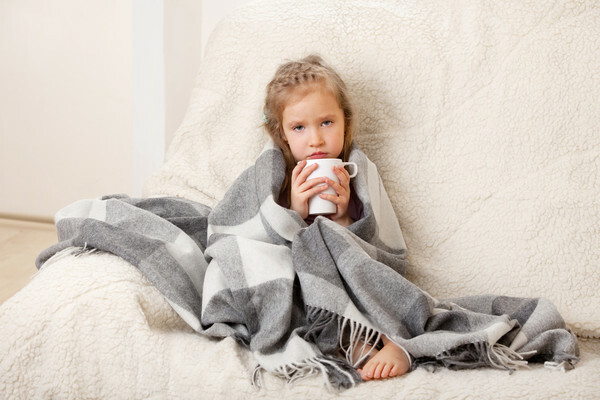
From dry air, the mucous membrane of the child begins to dry out, it becomes difficult for him to breathe. In addition, trying to dress their beloved child more warmly, the parents themselves, without knowing it, expose him to additional risk - it can be blown out even with the slightest draft
Sometimes parents are simply afraid to harm their child, leaving everything as it is and sincerely wondering why the child is apathetic, eats badly or is constantly sick.
To ensure a comfortable temperature and optimal humidity in the apartment for a child, you can focus on the prescribed SNIPs standards.
If flowers dry up in the house, especially during the heating season, this indicates a low level of humidity in the apartment. It is urgent to take action and raise it to at least 50%, while the norm for a child is 40-60%.
In common rooms, a comfortable temperature for a person is felt at a temperature of 21-24 ° C; in a sleeping room, a lower indicator can be maintained - 19-21 ° C. Then the sleep will be stronger and the child will breathe easier.

High humidity in bathrooms together with poorly functioning ventilation can cause the appearance of fungus, mold, whose spores will then be inhaled by the whole family.
Room temperature and humidity should be balanced. Since if both indicators are high, then the microclimate in the apartment will resemble a tropical one, which is also not useful for either adults or children.
After all, such an environment promotes the reproduction and spread of pathogenic microbes and microorganisms. The ideal ratio is achieved at a temperature of 22-24 ° C and a humidity of 50-60%.
Premises for newborns
Since a child at birth finds himself in a new environment for him, the task of parents is to help him adapt, to create optimal comfortable and healthy conditions for him.
On the one hand, a newborn person is a very weak creature that needs to be protected, and on the other hand, it is unusually strong. Do not forget that he has an accelerated metabolism, all body systems work in an enhanced mode.
22 ° C is the optimal temperature for a child's room for a child up to 6 months old. From six months it can be reduced to 19-21 ° C. This temperature is favorable for the development of the baby.
Do not be afraid that the baby may be cold. He is comfortable. When trying to wrap him up, the child will try to unfold, and if he does not succeed, then sweat vigorously. This can be fraught with dehydration of the baby's body, increases the risk of catching a cold even from a small draft.
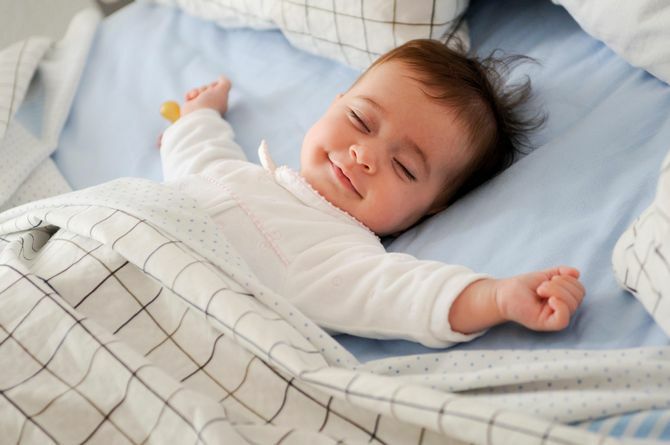
In no case should the child be wrapped up, he will immediately become hot, he will begin to sweat, be capricious, refuse to eat. And even if it seems that he does not move and may freeze, this is not the case - 22 ° C for him is quite a comfortable temperature
Pediatricians also recommend regularly ventilating the apartment with the newborn. Of course, this will not be the right decision at any time and not for any climate.
But if you adhere to the standards and monitor the indicators of air humidity in the apartment with a newborn, you can create a microclimate in which both adults and children will feel as much as possible comfortable.
Instruments for measuring temperature and humidity
An ordinary thermometer can be used to measure the temperature in any room of the apartment. It can be mechanical or electronic.
Such devices, in a bright colorful design, can be purchased in pharmacies, specialized stores, children's departments. A thermometer is installed at a neutral distance from heating devices, batteries. It should not be exposed to direct sunlight - this may affect the accuracy of the readings.
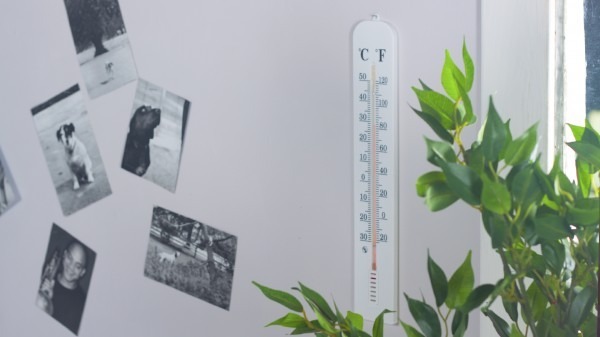
A room thermometer is inexpensive and can even be bought at a supermarket or pharmacy. Its use is absolutely safe. The red or blue liquid in his flask is ordinary alcohol, tinted for contrast. Even if such a thermometer flies off the wall and cracks, the alcohol will simply evaporate.
To measure humidity, use hygrometer. It is a small compact device that reacts subtly to changes in humidity in a room. You can buy a hygrometer at a specialized measuring equipment store.
If there is no such thing nearby, you can find an electronic clock in any store that shows not only the time, but also the temperature and humidity.
Of course, such functions in watches have a certain error, but it does not reach a critical size. In any case, with their help, you can track a significant deviation from the required parameters and take timely measures to correct them. The main thing in control is to notice the presence of problems in time.

Manufacturers of measuring instruments are sensitive to any changes in fashion and trends. Therefore, with a confidence of 90%, it can be argued that for any interior of a children's room there is a temperature and humidity meter that matches the style
Failure to maintain the balance of temperature and humidity in the room for children can affect their health. So, a decrease in the child's activity, problems with concentration, insomnia, lethargy, apathy can become the first symptoms of an improper indoor climate.
Too dry indoor air leads to a decrease in immunity, peeling of the skin, allergies and asthma.
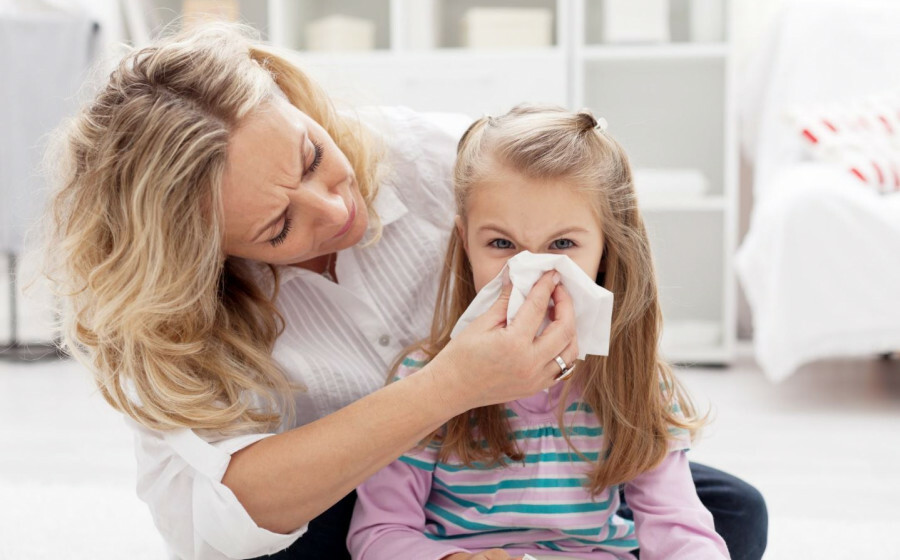
Humidity problems provoke the development of ENT diseases. Very young children especially often suffer from this. The most striking example is the adenoids. It generally turns out to be a vicious circle. Due to a weakened immune system, a child often falls ill with various ARVIs, and the tonsils grow, further weakening the immune system
Low humidity provokes drying of the mucous membrane, skin and makes the child more vulnerable to infectious diseases.
Ways to normalize temperature and humidity
Correcting temperature and humidity imbalances is easiest with household appliances. Pediatric doctors recommend using conditioners to regulate the air temperature in apartments. Only they should not work on an ongoing basis, but in a one-time switch-on mode.
In addition, air conditioners should be installed in adjoining or adjacent rooms with a nursery. This will ensure normal air circulation and minimize the risks of blowing out a hot baby.
And to regulate the humidity level, you can use humidifiers/ air dryers.
Since 2014, studies have been carried out in the west that speak of harm of these devices for human health. But strict adherence to the manufacturer's recommendations regarding the use and maintenance of climatic technology minimizes the risk of possible harm.
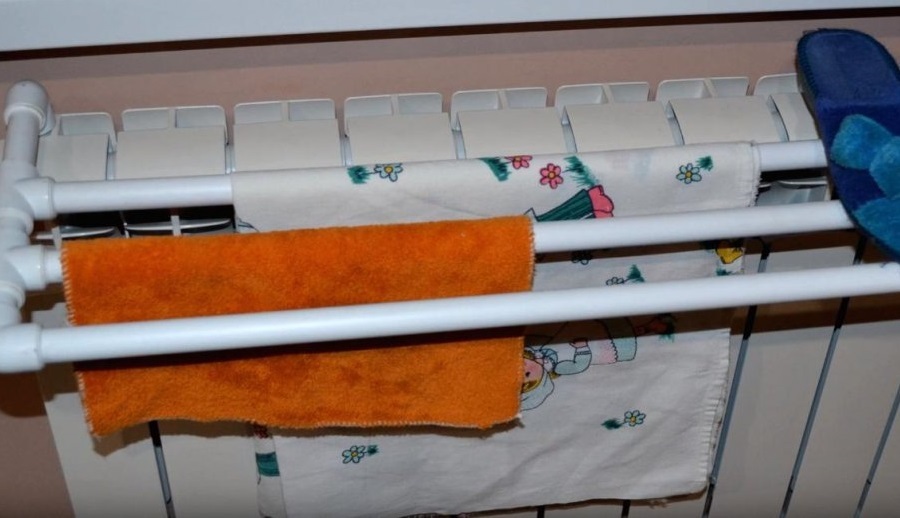
The first advice for parents of babies that you can hear from more experienced moms, especially in winter, is to install dryers on or near batteries. This naturally increases the humidity in the apartment, but not critical. Those. it becomes easier to breathe, and the feeling of dampness does not arise
There are other methods, with the help of which you can quite easily normalize the heat and humidity in the apartment:
- a wet towel on the heating radiator will increase the humidity;
- an open aquarium with fish in the nursery;
- frequent wet cleaning;
- frequent ventilation.
Compliance with these recommendations will help maintain an optimal indoor climate.
Conclusions and useful video on the topic
A handy humidifier from a plastic milk bottle:
5 ways to increase humidity in your nursery without a humidifier:
As you can see, it is not so difficult to monitor and regulate the level of temperature and humidity in the room. Cool air helps your child to resist colds. But too high room temperature and low humidity, on the contrary, contribute to frequent colds and the appearance of chronic diseases.
Do you keep the temperature and humidity in the nursery at the right level? Please tell our readers what methods you use to increase the humidity in the room. Leave your comments in the block below.
